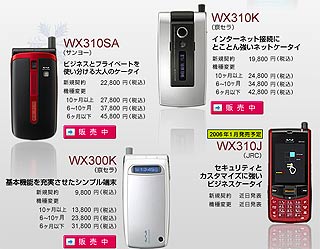Year of the Pig Shaping up as Golden
What’s this?? … mobs of Flying Ketai Pigs..?
Actually, 2007 promises to be far more interesting than even that cheeky title! Here goes our official WWJ Fearless Forecast for 2007 – all in one – huge – breath!
2007 promises to be far more interesting than even that cheeky title! Here goes our official WWJ Fearless Forecast for 2007 – all in one – huge – breath! M-commerce: The carriers? FeliCa-based services will continue to grab serious market share. At the end of 2006, DoCoMo had over 1 mln customers for their DCMX mobile credit-card service alone, not to mention the 18.3 mn regular FeliCa handsets in use as of 31 December. KDDI and SoftBank have FeliCa user bases in the millions as well.. grab a cuppa for after the jump!


 “Despite the high prices, there were huge line-ups waiting to buy the new Willcom PHSes,” said my Kiwi pal in an email last night. It looks like some of Willcom’s PHS phones appear to be selling well on the strength of flat-rate voice and data and handsets that are at least comparable to the high-end 3G cellular models from the Big Three carriers. Is this a hint of price destruction to come when the new licensees jump into the market in 2006?
“Despite the high prices, there were huge line-ups waiting to buy the new Willcom PHSes,” said my Kiwi pal in an email last night. It looks like some of Willcom’s PHS phones appear to be selling well on the strength of flat-rate voice and data and handsets that are at least comparable to the high-end 3G cellular models from the Big Three carriers. Is this a hint of price destruction to come when the new licensees jump into the market in 2006?